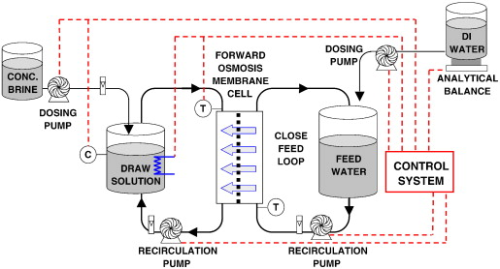
Osmotically driven membrane processes (ODMPs) such as forward osmosis (FO) and pressure retarded osmosis (PRO) have been extensively investigated for utilisation in a broad range of applications, including water treatment and desalination, power generation, and dewatering of aqueous solutions.
In ODMPs, the operating conditions and membrane properties play more critical roles in mass transport and process performance than in pressure-driven membrane processes.
However, a literature search reveals that ODMP membranes – especially newly developed ones – are tested under different temperatures, draw solution compositions and concentrations, flow rates, and pressures. In order to compare different membranes, it is important to develop standard protocols for testing of membranes for ODMPs.
In this article in a Special Issue of Desalination on Recent Advances in Forward Osmosis, a standard methodology is presented for testing of ODMP membranes, based on experience gained and operating conditions used in FO and PRO studies in recent years.
Round-robin testing of two commercial membranes in seven independent laboratories revealed that water flux and membrane permeability coefficients were similar when the participants performed the experiments and calculations using the same protocols.
The thin-film composite polyamide membrane exhibited higher water and salt permeability than the asymmetric cellulose-based membrane, but results with the high-permeability, thin-film composite membrane were more scattered.
While salt rejection results in RO mode were relatively similar, salt permeability coefficients for both membranes in FO mode were more varied.
The results suggest that high-permeability ODMP membranes should be tested at lower hydraulic pressure in RO mode, and that RO testing should be conducted with the same membrane sample that is used for testing in FO mode.



